If you had to choose a place in Mississippi to turn into a National Park where would you choose? I would have to say somewhere in the Delta where you could incorporate natural landscape (Forrest/Swamp/River) with cultural history. Considering the Delta is dying and needs something would this work?
OT: National Park in Mississippi
- Thread starter AttalaDawg72
- Start date
You are using an out of date browser. It may not display this or other websites correctly.
You should upgrade or use an alternative browser.
You should upgrade or use an alternative browser.
I would say upgrade the Gulf Islands National Seashore to a national park.
I’ve never been there, but heard about it.I would say upgrade the Gulf Islands National Seashore to a national park.
That seems like a no brainer to me.I would say upgrade the Gulf Islands National Seashore to a national park.
Issaquena County is already the lowest populated county in the state and it’s on the river. May be a good spot.Probably somewhere along the MS River
Leave us out of this!Issaquena County is already the lowest populated county in the state and it’s on the river. May be a good spot.
Issaquena County is already the lowest populated county in the state and it’s on the river. May be a good spot.
Issaquena National Park
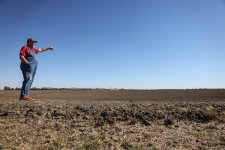
Glacier National Park
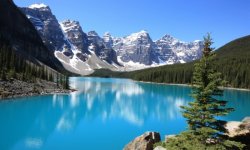
The Japanese are going to 17ing attack Pearl Harbor again if you trick them into visiting the Delta by putting a national park there. What are the tourists supposed to do, watch a 17ing bean sprout in plantin' season?
I don't know the logistics of creating a National Park, but the Pascagoula River is pretty unique in that it is, I think, the largest unaffected (meaning basically undammed) river in the Eastern US and possibly all of the Continental US.
Seems like that will be a more and more rare thing unless rivers are protected in some way. I believe the Pascagoula basin is kind of a birding paradise because so many migrating species use the huge acreage as a resting place after crossing the Gulf of Merica (17 yeah!!)
Seems like that will be a more and more rare thing unless rivers are protected in some way. I believe the Pascagoula basin is kind of a birding paradise because so many migrating species use the huge acreage as a resting place after crossing the Gulf of Merica (17 yeah!!)
according to the National Park Service it already is.I would say upgrade the Gulf Islands National Seashore to a national park.
There are only 63 sites with the “National Park” designation. MS has none.according to the National Park Service it already is.

List of national parks of the United States - Wikipedia
I don't know what "unaffected" technically means, but I do know about undamned. I's a big deal out west because of the salmon/steelhead migrationsI don't know the logistics of creating a National Park, but the Pascagoula River is pretty unique in that it is, I think, the largest unaffected (meaning basically undammed) river in the Eastern US and possibly all of the Continental US.
Seems like that will be a more and more rare thing unless rivers are protected in some way. I believe the Pascagoula basin is kind of a birding paradise because so many migrating species use the huge acreage as a resting place after crossing the Gulf of Merica (17 yeah!!)
The Pascagoula River is only 80 miles long. The Salmon River is the longest undamned river in the western US at 425 miles and the home of the longest salmon migration in the US. The Yellowstone River is the longest in the east and thus lower 48 at 692 miles long. When talking east and west in rivers we are talking continental divide or whether the water ends up in the Pacific or Atlantic/Gulf.
Sockeye and steelhead runs are super interesting if you have never read about them. They return inland as far as Idaho to spawn and the smolt will spend up to 3 years in freshwater before going to the ocean. Steelhead are genetically identical to rainbows, but these crazy 17ers decide to swim to the ocean for some reason, grow up and return to where they were born to spawn. Unlike salmon, some steelhead will actually head back to the ocean and do it all again. Fascinating to me that rainbow and steelhead are the same species.
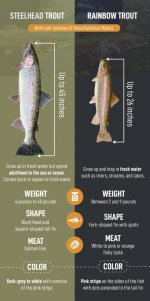
I was smallmouth fishing in the Salmon River back in September and hooked a fall chinook on a crankbait. It bent the hook and got away, but that 17er fought like a 1200lb marlin.
Yep. Their are many other designations under the NPS... Monuments, wild and scenic rivers, preserves, seashores, lakeshores, recreation areas, etc. 433 in all, but only 63 National Parks.There are only 63 sites with the “National Park” designation. MS has none.

List of national parks of the United States - Wikipedia
en.m.wikipedia.org
If you're looking to avoid crowds, definitely look up the NPS national recreation area. I can think of 3-4 that would be in consideration of the top 10 National Parks if they were designated as parks. The difference is in national recreation areas there are way fewer people and you can do more stuff. Like hunt.
The unaffected for the ‘goula has to do with the discharge rate and that it drains to the Gulf.I don't know what "unaffected" technically means
“It is significant as the only unaffected (or nearly so) river with a discharge of over 10 cubic kilometres (2.4 cu mi) per year flowing from the United States into the Gulf of Mexico, and indeed the only one in the Cfa Köppen climate classification zone anywhere in the world, with the nearest approaches being the Juquiá and Itajaí in southeastern Brazil[3] (The Yuan Jiangand Shinano Gawa are comparable to those Brazilian rivers but are only marginally in the Cfa zone). As a result, the Pascagoula has, in modern times, been the focus of a great deal of effort regarding its conservation[4] to prevent the construction of dams on it.”
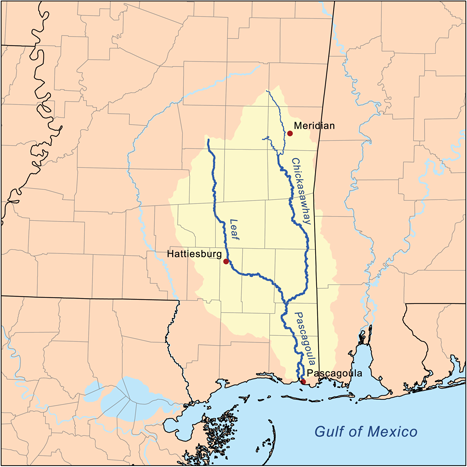
Pascagoula River - Wikipedia
Oxford, MS.
Level whatever currently exists there.
Level whatever currently exists there.
You have internet!?!?****Leave us out of this!
That would probably be good for the coast I guess but that is probably the one place in Mississippi that I would not want more visitors for. Guess tI would say upgrade the Gulf Islands National Seashore to a national park.
yea, I don’t know if I’m judging them unfairly because it’s not novel to me like the views out west are, but even if you looke at the barrier islands, as great as they are, I’m not sure they’re competitive with good national parks. They’re undeveloped beach, which is awesome, but I’m not sure how big of a draw that would be.Issaquena National Park
View attachment 751052
Glacier National Park
View attachment 751053
The Japanese are going to 17ing attack Pearl Harbor again if you trick them into visiting the Delta by putting a national park there. What are the tourists supposed to do, watch a 17ing bean sprout in plantin' season?
Somewhere from Vicksburg to the Louisiana line, south of Natchez.
But it's a futile effort. Look around at other National Parks. Nothing we have compares, as far as natural things. We have some history that we could have built around maybe, but like I said in the thread a week or so ago, missed the boat on that.
Real tourism in the state of MS is generally a non-starter. Be happy with bike traffic on the Trace. It's no coincidence to me, that the 2 best hikes (if you can call them that) are at the extreme corners of the state on the borders.
But it's a futile effort. Look around at other National Parks. Nothing we have compares, as far as natural things. We have some history that we could have built around maybe, but like I said in the thread a week or so ago, missed the boat on that.
Real tourism in the state of MS is generally a non-starter. Be happy with bike traffic on the Trace. It's no coincidence to me, that the 2 best hikes (if you can call them that) are at the extreme corners of the state on the borders.
Last edited:
In my mind, this is what every SPSer looks like.Issaquena National Park
View attachment 751052
If you ask them, it’s already a national treasure, holy site, and the 8th wonder of the world. There’s never been and never will be another place like Ooooxfuuuuuhd.***Oxford, MS.
Level whatever currently exists there.
I dunno, there are some stupid National Parks out there.Somewhere from Vicksburg to the Louisiana line, south of Natchez.
But it's a futile effort. Look around at other National Parks. Nothing we have compares, as far as natural things. We have some history that we could have built around maybe, but like I said in the thread a week or so ago, missed the boat on that.
Tourism in the state of MS is generally a non-starter. Be happy with bike traffic on the Trace.
I think about 20-30 of them should be reclassified. Congaree, Gateway Arch, and Cuyahoga appear to be especially crappy. Coolest one nobody goes to... North Cascades. As beautiful and breathtaking as Glacier when the sun is out.
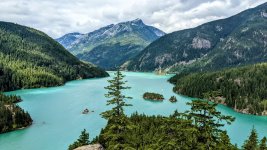
ive read that the Tombigbee River watershed is one of the most unique areas in the US. It contains flora and fauna that not found anywhere else in the US. I really don’t see anything there that people would want to see and it’s pretty well developed beyond what a National park would be but it is unique.
The Natchez Trace is part of the National Park Service, so how isn't there a National Park in Mississippi?
And turn it into a wildlife preserve for the Mississippi Black Bear and the Land Shark, whatever the 17 that is********Oxford, MS.
Level whatever currently exists there.
Vicksburg National Military Park should be a huge attraction but it’s underfunded, poorly maintained (just cutting the grass the last few years had been a challenge), and rarely upgraded. They could make the Cairo and the adjacent museum much better with a major renovation. The visitor’s center looks like it was built in the 50s. They should have added something near the Illinois monument years ago and actually have the original park office just down the hill. Fort Hill could also have something cool added to it (some sort of observatory with telescopes, etc.).
I think it would be great if they just fully funded what we have rather than adding another one elsewhere. It could be so much more than just a military focus. I know people who have lived within an hour or so of the park their entire lives and never been to it. It’s ridiculous that it doesn’t at least attract the people nearby. I’m guessing a large percent of the Mississippians on this board have never been to it either. Could you imagine living in Pennsylvania and never gone to Gettysburg?
I think it would be great if they just fully funded what we have rather than adding another one elsewhere. It could be so much more than just a military focus. I know people who have lived within an hour or so of the park their entire lives and never been to it. It’s ridiculous that it doesn’t at least attract the people nearby. I’m guessing a large percent of the Mississippians on this board have never been to it either. Could you imagine living in Pennsylvania and never gone to Gettysburg?
In my mind, this is what every SPSer looks like.
Is that color shirt Crimson Tide Red or Riddell maroon?
I always thought the trace was a national park. Is Mount Rushmore a national park? If that tourist trap gets to be called a national park, than give us three.
I know people who have lived within an hour or so of the park their entire lives and never been to it. It’s ridiculous that it doesn’t at least attract the people nearby. I’m guessing a large percent of the Mississippians on this board have never been to it either.
Raises hand on never really going and living within an hour or so. I went as a kid of probably 10 or 12 in the early 70's and HATED every moment of it. For a kid it was like riding through a boring cemetery and seeing monument after monument after monument and hills and kudzu. It was hot, and miserable.
Then I lived in Brandon for over 20 years later in life and never went, never really thought about it unless I was driving through Vicksburg and thought, "I should go there!". I would enjoy it now a lot more.
I've been in Starkville now since before the Grant Presidential Library and Lincolniana Exhibit started and still haven't been to them. You'd never know I love history and thought about being a History major and teaching.......
Imagine the dude in New Jersey who testifies against a mob boss and gets put in WITSEC working at the Issaquena National Park...Issaquena National Park
View attachment 751052
Glacier National Park
View attachment 751053
The Japanese are going to 17ing attack Pearl Harbor again if you trick them into visiting the Delta by putting a national park there. What are the tourists supposed to do, watch a 17ing bean sprout in plantin' season?
I lived 45 minutes away for 30 years before I finally went over and visited it a few years ago. It is a beautiful and moving site to see. Really outstanding. But I agree with your comments that the visitors / information center could be so much more. It could be a much bigger tourist attraction than it is.Vicksburg National Military Park should be a huge attraction but it’s underfunded, poorly maintained (just cutting the grass the last few years had been a challenge), and rarely upgraded. They could make the Cairo and the adjacent museum much better with a major renovation. The visitor’s center looks like it was built in the 50s. They should have added something near the Illinois monument years ago and actually have the original park office just down the hill. Fort Hill could also have something cool added to it (some sort of observatory with telescopes, etc.).
I think it would be great if they just fully funded what we have rather than adding another one elsewhere. It could be so much more than just a military focus. I know people who have lived within an hour or so of the park their entire lives and never been to it. It’s ridiculous that it doesn’t at least attract the people nearby. I’m guessing a large percent of the Mississippians on this board have never been to it either. Could you imagine living in Pennsylvania and never gone to Gettysburg?
Well it is the only small town in these United States with a SQUAREIf you ask them, it’s already a national treasure, holy site, and the 8th wonder of the world. There’s never been and never will be another place like Ooooxfuuuuuhd.***
Vicksburg National Military Park should be a huge attraction but it’s underfunded, poorly maintained (just cutting the grass the last few years had been a challenge), and rarely upgraded. They could make the Cairo and the adjacent museum much better with a major renovation. The visitor’s center looks like it was built in the 50s. They should have added something near the Illinois monument years ago and actually have the original park office just down the hill. Fort Hill could also have something cool added to it (some sort of observatory with telescopes, etc.).
I think it would be great if they just fully funded what we have rather than adding another one elsewhere. It could be so much more than just a military focus. I know people who have lived within an hour or so of the park their entire lives and never been to it. It’s ridiculous that it doesn’t at least attract the people nearby. I’m guessing a large percent of the Mississippians on this board have never been to it either. Could you imagine living in Pennsylvania and never gone to Gettysburg?
There may never be a bigger wasted opportunity than Vicksburg, on the whole.I lived 45 minutes away for 30 years before I finally went over and visited it a few years ago. It is a beautiful and moving site to see. Really outstanding. But I agree with your comments that the visitors / information center could be so much more. It could be a much bigger tourist attraction than it is.
The Natchez Trace is part of the National Park Service, so how isn't there a National Park in Mississippi?
I believe it's technically a Recreational Area. But yeah, maintained by the NPS.I always thought the trace was a national park. Is Mount Rushmore a national park? If that tourist trap gets to be called a national park, than give us three.
I didn't realize the Arch was a Park. So yeah that's kinda dumb.I dunno, there are some stupid National Parks out there.
I think about 20-30 of them should be reclassified. Congaree, Gateway Arch, and Cuyahoga appear to be especially crappy. Coolest one nobody goes to... North Cascades. As beautiful and breathtaking as Glacier when the sun is out.
If we had made Vicksburg our capital, and it had grown, I could see maybe the area south of there, to Port Gibson, down to Natchez, and all that area around Clear Creek could have been a good park and trail system. Area west of Meadville too, basically the Homochitto National Forest as is.
Natchez could have been our Gatlinburg. (ETA *************************************) @dorndawg
Last edited:
No one would ever find him though.Imagine the dude in New Jersey who testifies against a mob boss and gets put in WITSEC working at the Issaquena National Park...

